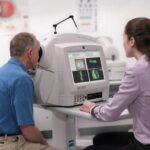| Software | Key Strengths | Potential Limitations | Best For |
| Dentimax | • Offers both cloud-based and on-premise/server deployment. • Tight integration between imaging (e.g. X-ray sensors) and practice management, charts, treatment planning, imaging all in one. • Transparent pricing and relatively simple UI/usability; solid for small to medium general practices. | • May lack some of the specialty tools needed for multi-location practices or practices with more complex specialty workflows (e.g. orthodontics, periodontics) as compared to enterprise level systems. • Some advanced features might only be available with higher tier plans or add ons. • For very large practices, scalability and feature depth might lag behind some cloud native competitors. | Practices that want strong imaging integration, reliable billing, and both cloud/on-premise flexibility; especially good for single-site or modest multi-site general dental offices. |
| Curve Dental | Cloud first, modern UI; good for ease of onboarding and remote/cloud access. Automated reminders, patient communication tools, etc. | Can sometimes feel feature heavy or have a steeper learning curve for staff unfamiliar with cloud workflows; some users report occasional glitches or delays in support. | Practices wanting a sleek, modern cloud solution and who value mobile access, communication tools, and ease of use. |
| Open Dental | Strong customization, large user community, transparency, often highly configurable for workflows. | Because of its flexibility, sometimes requires more setup/training; if you don’t have staff willing to adapt, there may be learning-curve delays. | Practices that want full control over workflows, custom modules, and are okay investing some time/effort in setup. |
| Enterprise/Cloud-oriented Competitors (e.g. Tab32, Denticon, others) | Often very strong for multi-office scalability, deep analytics, cloud deployment, integrations across many sites and providers. | Higher cost; possibly more features than needed for smaller offices; sometimes more complex onboarding/training; subscription fees may be significant. | Large practices or DSOs, multi-location clinics, practices that plan substantial growth and need centralized management of multiple sites. |
Key Takeaways
- Dentimax’s dual deployment model (cloud or on premise) is excellent for practices that want flexibility depending on internet reliability, control over servers/data, or preference for owning a local installation. If your practice is in a location with spotty internet or you want more control, this is a major plus.
- Its imaging integration (sensors, charts, clinical tools) means fewer headaches switching between systems or trying to consolidate patient records and imaging. That can reduce both errors and time.
- The trade offs are typical: times when you need deep specialty tools or scale across many locations, Dentimax may require add-ons or more planning. Also, while UI is praised for simplicity in many reviews, practices with more complex needs might need more customization.
How to Use This Table for Your Decision
Here are steps to help you decide which software is best for your practice:
- List Your Needs First
Identify what you absolutely need, imaging, charting, specialty tools, remote access, reporting, claims, etc. - Match Needs to Strengths
Use the strengths table to see what platforms align well. If imaging and integrated sensors are crucial, Dentimax shines. If you need fast onboarding and cloud simplicity, maybe Curve Dental or similar is better. - Consider Scale and Growth
Are you a single clinic or do you plan to expand? Are you growing fast or relatively stable? Software that works well for small offices may struggle under the demands of multiple sites or large patient load. - Test the UI & Support
Always arrange demos, free trials. Let your front desk/billing people try it. Look at customer support quality, and how much training is included. - Watch Total Costs
Upfront cost, subscription fees, hardware or sensor add-ins, maintenance, upgrade fees, make sure to tally all these, not just the base price.
Why Dental Practice Management Matters
Running a dental practice isn’t just about clinical expertise; it’s also about keeping the business side of things running smoothly. Dental practice management encompasses everything from scheduling and billing to compliance, patient communication, and staff coordination. A well-managed practice ensures that patients experience efficient, professional care from the moment they book an appointment to the time they leave the chair.
One of the biggest challenges in dental practice management is balancing administrative efficiency with patient experience. Patients expect quick appointment scheduling, transparent billing, and clear communication about treatment options. At the same time, your staff needs tools that reduce repetitive tasks, minimize errors, and provide visibility into the daily workflow. When these systems align, the entire practice runs more smoothly, leaving dentists free to focus on what they do best: delivering quality oral care.
Effective management also supports regulatory compliance and data security, both of which are critical in healthcare. HIPAA guidelines, insurance requirements, and local regulations demand meticulous record keeping and secure handling of patient information. Practices that rely on outdated systems or manual processes run the risk of costly mistakes, data breaches, or inefficiencies that slow growth.
Ultimately, good dental practice management is about creating a foundation for long term success. It improves patient satisfaction, reduces stress for staff, and helps practice owners build a sustainable, profitable business. Whether through software, streamlined workflows, or strong leadership, investing in management processes pays off in healthier operations and happier patients.
Did you find this helpful? Check out our other helpful articles on our website.
Read Also
- Why Whole Slide Imaging Shapes the Future of Digital PathologyWhole slide imaging has become one of the most important developments in modern pathology. It changes how tissue is examined, how cases are shared and how pathologists collaborate with the wider care team. More than a technological upgrade, it represents a shift in how laboratories think about their workflow, their storage needs and the tools… Read more: Why Whole Slide Imaging Shapes the Future of Digital Pathology
- Comparing 2025 Dental Practice Management Software OptionsSoftware Key Strengths Potential Limitations Best For Dentimax • Offers both cloud-based and on-premise/server deployment. • Tight integration between imaging (e.g. X-ray sensors) and practice management, charts, treatment planning, imaging all in one. • Transparent pricing and relatively simple UI/usability; solid for small to medium general practices. • May lack some of the… Read more: Comparing 2025 Dental Practice Management Software Options
- Top Innovations in Dermatology and Skincare TechnologiesHave you ever wondered how skincare keeps getting better year after year? From fighting acne to reducing wrinkles, today’s treatments seem more advanced than ever before. The tools and techniques used by dermatologists today are smarter, safer, and more effective than those we had just a few years ago. These breakthroughs don’t just help with… Read more: Top Innovations in Dermatology and Skincare Technologies
- Telehealth and Beyond: Building a Connected Continuum of CareHealthcare is on the verge of a radical transformation. Technology no longer simply supports medicine; it actively shapes how care is delivered and experienced. Achieving a seamless continuum demands more than deploying tools—it requires intentional design, coordinated teamwork, and innovative platforms that adapt to diverse clinical and patient needs. This article explores key strategies for… Read more: Telehealth and Beyond: Building a Connected Continuum of Care
- Optimizing CT Protocols: The Hidden Key to Efficiency and Cost Savings in RadiologyIntroduction: Why CT Protocol Optimization Matters Computed Tomography (CT) is a cornerstone of modern diagnostic imaging, providing critical information across nearly every medical specialty. However, maximizing the value of CT — both clinically and financially — requires more than just advanced hardware. The real secret lies in the optimization of CT protocols. When CT protocols… Read more: Optimizing CT Protocols: The Hidden Key to Efficiency and Cost Savings in Radiology
- The Role of Carbide Burs in Modern Dental ProceduresAs a result of this procedures need to be well coordinated and to this end, precision tools are used by dental practitioners. Among the most essential tools in a dentist’s arsenal are carbide burs, which have revolutionized various aspects of dental work. Today’s dentistry cannot work without these tools as they are both strong, sharp,… Read more: The Role of Carbide Burs in Modern Dental Procedures
- Detection of Diabetic Retinopathy: The AI AdvantageDiabetic retinopathy (DR) is a leading cause of blindness among working-age adults, affecting millions worldwide. The prevalence of DR is alarmingly high, affecting an estimated 34.6 million people globally. In the United States alone, it is estimated that 7.7 million adults have some form of diabetic retinopathy. How Does Diabetes Affect the Eye? Most of… Read more: Detection of Diabetic Retinopathy: The AI Advantage
- Advances in Digital Health: Transforming Modern HealthcareThe healthcare landscape is undergoing a seismic shift with the advent of digital health technologies. These innovations are not just modern conveniences; they are transformative tools that bridge gaps in accessibility, improve patient outcomes, and empower individuals to take charge of their health. From wearable devices to telehealth and artificial intelligence, digital health is creating… Read more: Advances in Digital Health: Transforming Modern Healthcare









